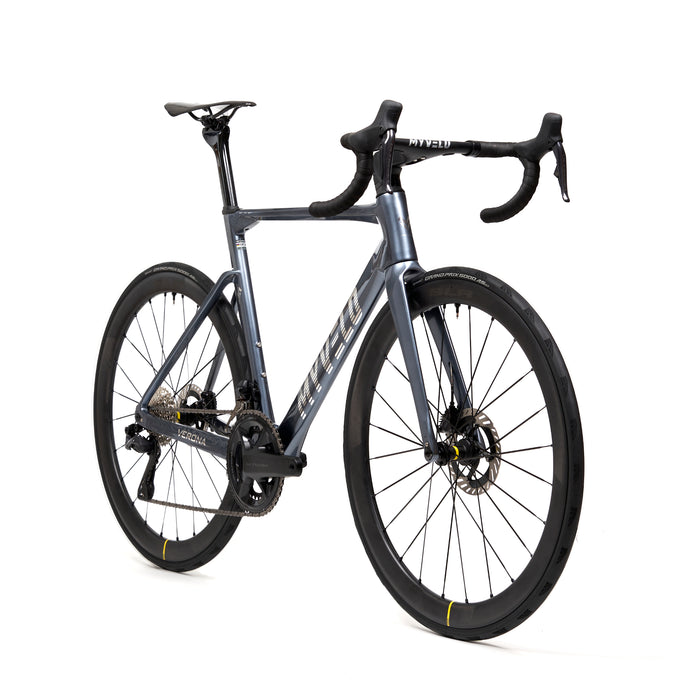
Verona road bike
incl. FREE shipping & free returns
The function of the derailleur hanger is to support the rear derailleur and hold it in the correct position to enable precise gear changes. Because the derailleur hanger is relatively exposed, it can be damaged in the event of an impact or accident. In such cases, it is often easier and less expensive to replace the derailleur hanger rather than repairing or replacing the entire frame.
The derailleur hanger, also known as a shift cross or shift tube, is a component in the bicycle gear system that serves to guide and tension the shift cables. It is usually made of aluminum or steel and is usually mounted on the underside of the frame.
The derailleur hanger usually has two or three holes through which the shift cables pass. One hole is used to pass the shift cable for the smaller sprockets (rear wheel), another hole is used for the shift cable for the larger sprockets (rear wheel). In some cases there is also a third hole that is used additionally to tension the shift cable.
A derailleur hanger can be adjusted manually or automatically. With manual adjustment, the shift cable must be manually tightened and adjusted, while with automatic adjustment, this is done automatically by the gearshift itself. Automatic derailleur hangers are usually more expensive than manual derailleur hangers.
A broken derailleur hanger can cause the gears to stop working properly and the shift cables to feel loose. In this case, the derailleur hanger should either be repaired or replaced.
There are also derailleur hangers with the option of changing the shift cables without removing the derailleur hanger, through a kind of "quick release" on the derailleur hanger.
To replace a derailleur hanger, you should follow these steps:
First, you should turn the bike over and secure the wheels so that it cannot roll away.
It is important to note that replacing the derailleur hanger is an advanced maintenance operation and it is recommended to have it done by a professional if you do not have the necessary knowledge and tools.

Für viele E-Bike-Fahrer ist das Display ein zentraler Bestandteil des Fahrerlebnisses. Es liefert wichtige Informationen und sorgt für intuitive Steuerung. Mit dem Bosch Purion 200 stellt Bosch ein neues, minimalistisches Display vor, das kompakte Eleganz und Funktionalität vereint. Doch was...


Immer mehr Menschen steigen vom Auto aufs Fahrrad um – und das nicht nur in der Freizeit. Das sogenannte Dienstrad hat sich in den letzten Jahren als attraktive Alternative zum klassischen Firmenwagen etabliert. Insbesondere E-Bikes stehen bei Arbeitnehmern und Arbeitgebern hoch im Kurs. Warum? Sie sind nicht nur nachhaltig, sondern oft auch kostengünstiger und gesünder.